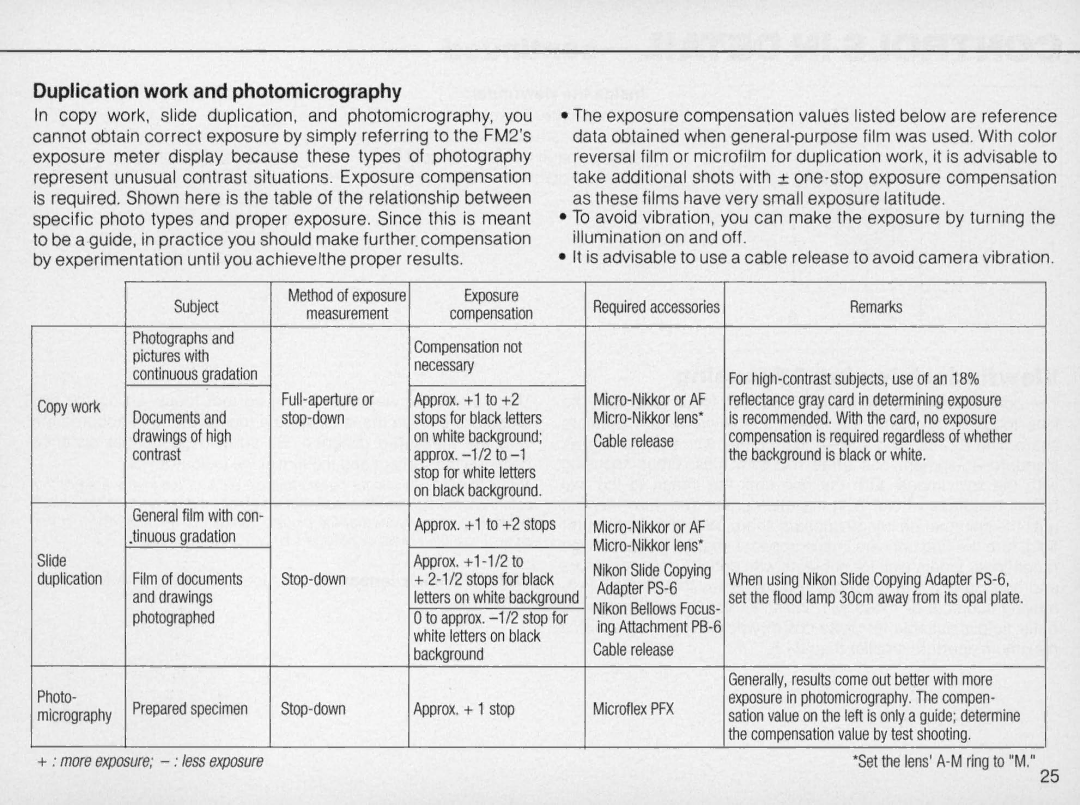1683, FM2 Body only specifications
The Nikon 1683, also known as the Nikon FM2, is a highly regarded 35mm film camera that exemplifies the craftsmanship and design ethos of Nikon. Manufactured from 1982 to 2001, the FM2 is cherished by both amateur and professional photographers for its reliability, simplicity, and robust build quality. As a fully manual camera, the FM2 emphasizes the art of traditional photography, allowing users to engage fully with the photographic process.One of the hallmark features of the FM2 is its durable, lightweight aluminum body. This construction provides not only a feel of solidness but also enhances portability for on-the-go shooting. The camera is equipped with a vertical-travel mechanical focal-plane shutter, capable of achieving shutter speeds from 1/4000 to a full second, with a flash sync speed of 1/200 second. This extensive range enables photographers to adapt to various lighting conditions, making the FM2 versatile for both bright outdoor scenes and low-light environments.
The FM2 boasts a unique feature known as the interchangeable focusing screen, allowing users to customize their viewing experience according to their shooting style or the type of photography being pursued. The clear and bright viewfinder provides precise framing and focusing, essential for achieving sharp images.
Another significant aspect of the Nikon FM2 is its compatibility with a wide range of Nikon F-mount lenses, both manual and autofocus options. This compatibility enables photographers to explore different focal lengths, depths of field, and creative perspectives, enhancing their artistic expression through various lens choices.
The FM2 also incorporates a precise exposure metering system. The camera features a center-weighted metering mode, which provides accurate readings based on the central area of the frame. This ensures that exposure is determined with precision, a critical aspect for achieving well-balanced photographs.
As a mechanical camera, the FM2 does not rely on batteries for basic operation, making it an ideal choice for shoots in remote locations or during extended outdoor adventures. The battery is only required for the light meter, demonstrating the FM2’s focus on functionality and reliability without the dependency on electronic components.
In summary, the Nikon 1683, or FM2, stands out as a timeless piece in the realm of film photography. With its mechanical shutter, robust build, interchangeable focusing screens, and compatibility with an extensive range of lenses, the FM2 remains a favorite for purists who appreciate the manual photography process and the high-quality images that can be achieved through this classic camera.

